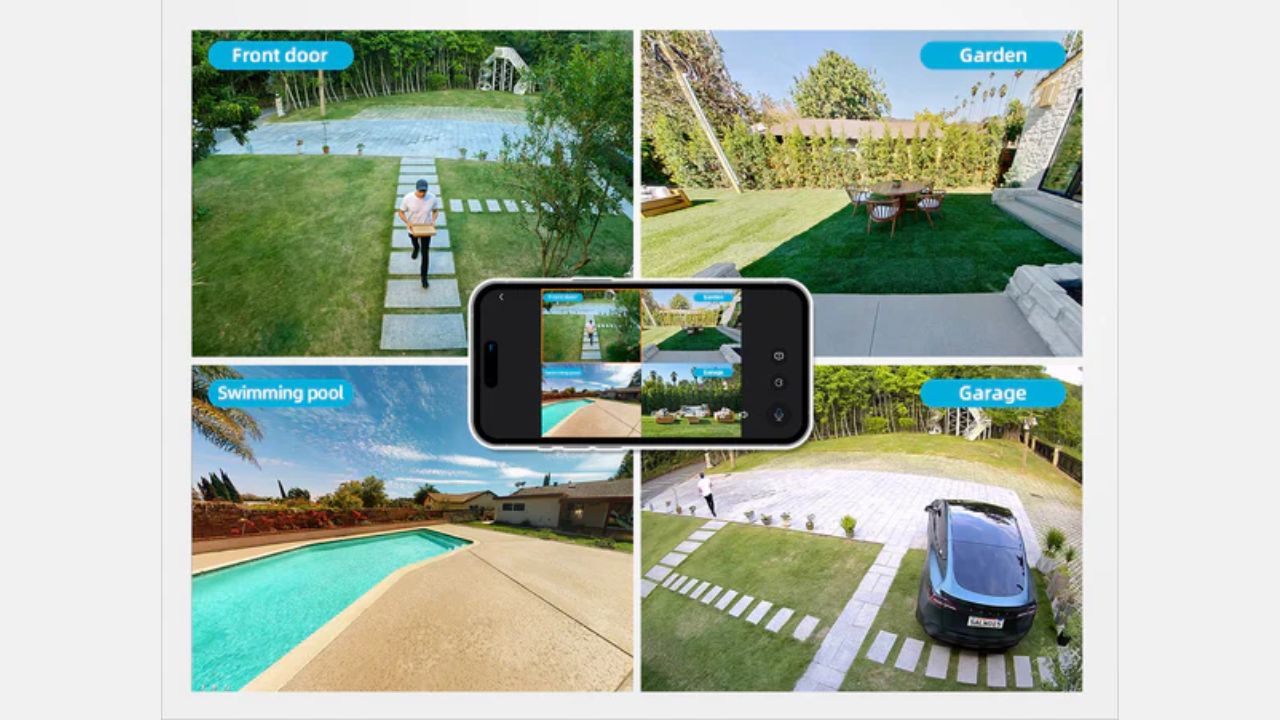The security of homes is concerned, the installation of security cameras is among the best things that one can do. But, it is equally important as the selection of the system to know how many cameras you require. For detailed insights on home security solutions, click here to read more.
Evaluate the size and distribution of the property
The first thing that needs to be done to define the number of security cameras you require is to assess the area and the configuration of the premises. Homes with bigger floor spaces or complicated structural designs may need more cameras to capture all important areas. Identify areas of weakness, location of doors, and large patios or balconies. Small businesses may require only a couple of cameras. On the other hand, big businesses may require a combination of indoor and outdoor cameras to capture all the areas.
Identify High-Risk Areas
It is important that when choosing the locations to set your cameras, you have to know the weak areas on your property. These are the main entry points such as the front and back doors, ground floor windows, the driveway, and garages. Also, it will be useful to observe such areas as side doors or dark lanes and avenues. By knowing these risky spots, you will be in a position to install the right number of cameras that will cover the most sensitive areas in your compound.
Differences between Indoor and Outdoor Coverage
Indoor and outdoor security camera systems need equal consideration when installing surveillance cameras. Whereas outdoor cameras assist in discouraging potential intruders before they get into the house, indoor cameras offer extra protection by observing important spaces within the house. In this case, the cameras can be installed in living areas, corridors, and doors if required. Outdoor cameras should cover the outside of your property, doors, gates, and fences.
Plan for Future Expansion
In any case, when installing a security camera system, one should think about the future as well. Think about how your property might evolve in the future. No matter whether you are going to build a new story to your house, put up new constructions in the yard, or acquire new valuable items, it is essential to keep the possibility of future cameras in mind. Choosing a scalable system means that you can incorporate more cameras into the system as your security requirements change.
Consideration of the Connectivity and the Power Sources
The type of camera also influences the number of units; wired, wireless, or solar-powered units for instance. Wireless cameras can be placed almost anywhere and as a result, more areas can be monitored with fewer cameras. On the other hand, wired cameras may need additional units because of the installation limitations, especially in big facilities. Outdoor locations that do not have many outlets for the connection of electrical power are suitable for the installation of solar-powered cameras. Knowledge of such differences is useful in arriving at a better decision on the number and type of cameras needed for comprehensive surveillance.
Evaluate Your Budget
This means that the number of security cameras that one can afford will be greatly determined by the amount of money that one has to spend. It is always good to get the best security for your property but it is also important to note the best security that you can afford. Begin with the high-risk zones and then proceed with the other areas as you can fund your system. It is important to remember that sometimes, it is better to have fewer, but better and more equipped cameras than to have more cameras that are of worse quality and lack features.
Seek Professional Advice
If you have some questions about the number of cameras that should be installed, you should turn to a security specialist. Security personnel can also assist in the assessment of the property, recommend the best cameras to use, and even recommend the best place to install the cameras. They can offer you the things that they have learned from previous projects so that you will not repeat the same mistakes and, more importantly, ensure that the security system you are implementing will be the best for the task.
Conclusion
Choosing the appropriate number of security cameras is one of the critical factors. This will determine the effectiveness of the home security system. Thus, the size and layout of your property, the assessment of the more vulnerable areas, the types of cameras, their features, and possible future expansion will allow you to create the best protection system. It can be a few specific points or a dense web of coverage; the emphasis is made on the fact that all weak spots must be protected. If you are to follow the right procedures, then you will be on your way to getting the needed peace of mind and also protecting your home adequately.


